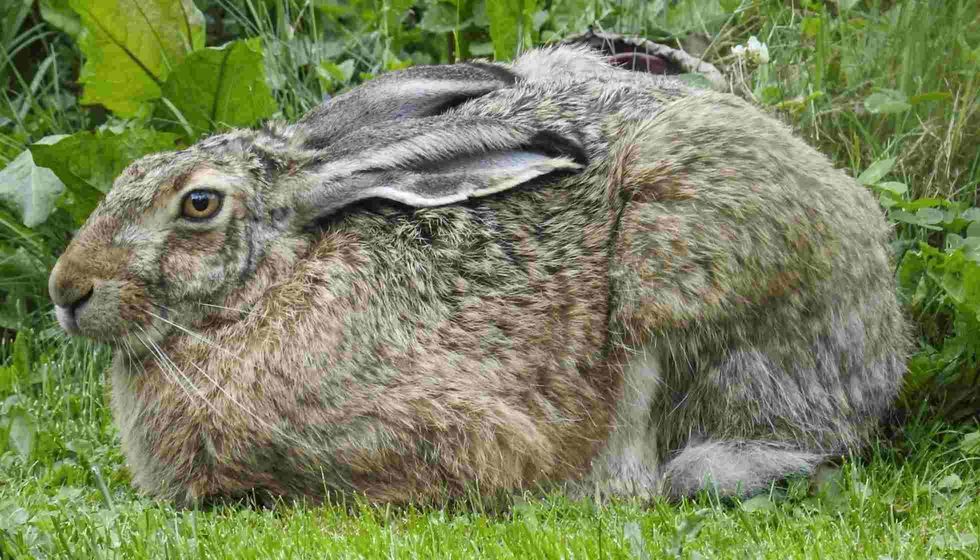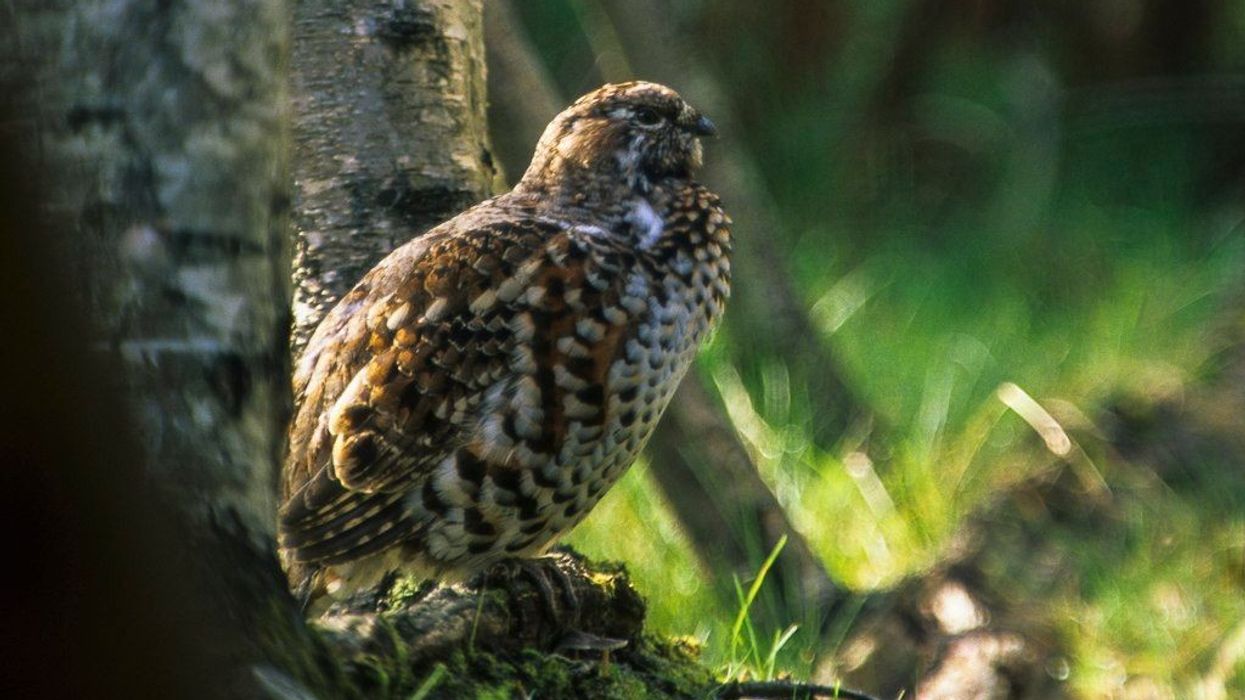The brown hare (Lepus europaeus) is also known as the European Hare. It is mainly found in parts of Europe, including the United Kingdom and in a few regions of Asia.
They are distinguished from other hares by their long black-tipped ears, large nostrils, unique body length, and powerful hind legs. They are nocturnal but during their breeding season, you might see them running around in broad daylight!
They are herbivores and survive on grasses, herbs, small twigs, and barks. They are also very shy and prefer to live in pairs or alone, but not in herds.
Their specialized hind legs help them to run even faster when they need to escape from other animals. Interestingly, brown hares do not make a burrow, instead, they create depressions in the ground.
Leverets (young hares) are born with a fully furred body and they leave the nest as soon as they are born which makes them precocial.
These brown hares are often targeted by birds of prey and other predator animals, hence their population is quite less near the areas where foxes and other potential predators are found. If you want to know some more fascinating facts about brown hares then keep reading this article!
Brown Hare Interesting Facts
What type of animal is a brown hare?
They are a variety of rabbit.
What class of animal does a brown hare belong to?
These brown hares belong to the Mammalia class.
How many brown hares are there in the world?
They are an abundant species. The most recent record we have is from 1995 when 817,500 brown hares were recorded.
Where does a brown hare live?
They are found mostly in arable farms but they can also be spotted in open fields and among the scattered bushes of temperate grasslands. They are highly adaptable to their surroundings, but arable farms are their favorite habitats as they provide food like wheat and sugar beet for the hares.
What is a brown hare's habitat?
They were first introduced to Britain by Romans and today you can find them all over Britain. They are most commonly found in parts of Orkney, the Inner Hebrides, and the Clyde islands.
Who do brown hares live with?
Brown Hares generally live alone. However, sometimes, they come together to form loose groups.
How long does a brown hare live?
The average life span of a brown hare is usually between three and four years.
How do they reproduce?
Brown hares reproduce through copulation. The mating season is from January to August and the peak month is March.
A female hare is most likely to fall pregnant during this peak breeding season, which is also often known as ‘March Madness’. Their method of breeding can be recognized as polygynous (males mating with multiple females).
While the male is fertile almost all year round, the females are only fertile for a certain period, giving rise to competition. Once a female is ready to mate she often races along the countryside beginning a chase to evaluate the stamina of the males that she might mate with.
After that, the female fights the males and finds the fittest one. She mates with the fittest of the males.
What is their conservation status?
The conservation status of brown hares under the UK Biodiversity Action Plan is Least Concern as their population is moderate. Although they are found in large numbers, in certain areas the population has decreased due to hunting and agriculture patterns.
Brown Hare Fun Facts
What do brown hares look like?
The brown hare also goes by the name Lepus europaeus. They have a unique golden brown fur-covered body but they are found in other varieties of colors as well.
They have a belly that is generally pale accompanied by a white tail and big nostrils. They are larger than rabbits and they have long ears which are black-tipped, along with powerful hind legs.
How cute are they?
We definitely associate the word cute with brown hares thanks to their sweet appearance, including their fully furred body and adorable eyes with long black-tipped ears. They are small and harmless which makes them even cuter!
How do they communicate?
There are a number of ways that brown hares communicate. They use different physical gestures in different situations.
Raising their black-tipped ears is associated with showing an interest in something while lowering them is a sign of warning for others to stay away. During the breeding season, they thump their front limbs to challenge competitors while thumping their hind legs also serves as a warning to others of a predator nearby.
How big is a brown hare?
Adult brown hares are typically 20.86 in (53 cm) long and 27.55 in (70 cm) tall. This is the average height of all hares, so they are approximately the same size as an arctic hare.
How fast can a brown hare move?
Brown hares can move at speeds of up to 45 miles per hour when being chased. Also, they can jump up to 18ft (5.5m) in one leap, impressive!
How much does a brown hare weigh?
The weight of a female brown hare is typically 8.15 lb (3.7 kg). This is heavier than the male brown hare which typically weighs 7.27lb (3.3 kg).
What are their male and female names of the species?
The males of the species are called ‘bucks' and the females of the species are called ‘does’.
What would you call a baby brown hare?
Baby brown hares are known as ‘leverets’.
What do they eat?
As brown hares are herbivores they survive solely on weeds, herbs, and grasses. Thanks to their adaptive nature they occasionally also eat crops, soy, and sugar beet.
Are they dangerous?
No possible signs of danger have been recorded in regards to the brown hare.
Would they make a good pet?
As they are mostly found in open spaces it wouldn't be fair to keep brown hares as a pet. It’s better to leave them in their very own natural habitat as they need a large open area to run around in.
Did you know...
In European culture, brown hares are considered a symbol of fertility.
Their lifespan may be only three to four years, but the oldest of these species lived to the age of 12!
Leverets are born with their eyes open, unlike other species that take time to open their eyes.
Unique features of the brown hare
The most unique feature that distinguishes the brown hare from the rest is its long limbs. They also have big nostrils and long ears that are black-tipped. Their white-colored tail is also usually black at the tip.
Is the brown hare endangered?
According to UK Biodiversity Action Plan, they do not fall under the 'Endangered Species' category. However, in some places, they are vulnerable due to human activities such as overgrazing and changes in agricultural practices. Also, activities like hare coursing may put them in a threatening situation. This is why hare coursing is banned in Britain.
Here at Kidadl, we have carefully created lots of interesting family-friendly animal facts for everyone to discover! You can even occupy yourself at home by drawing one on our brown hare coloring pages.









